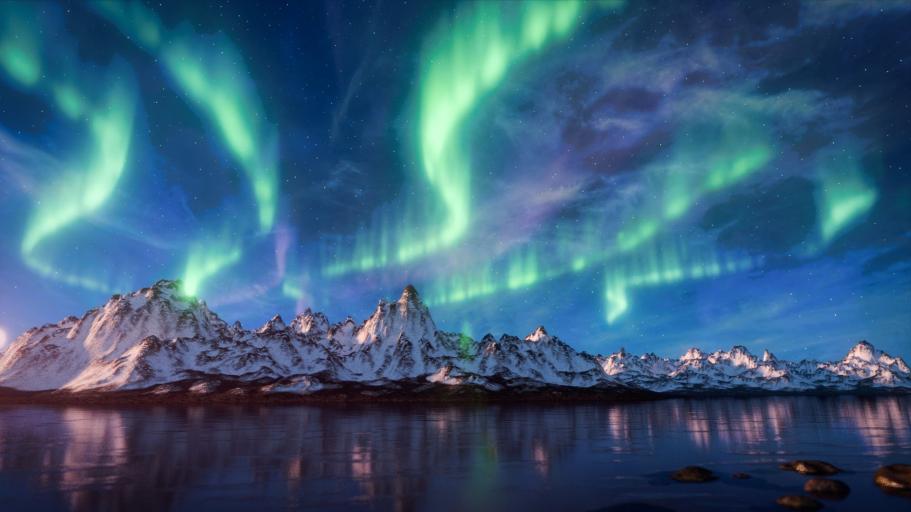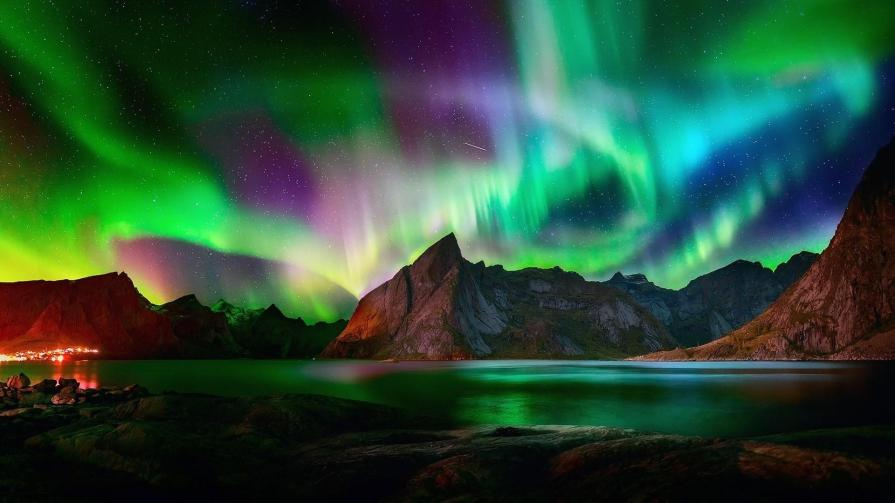How Do the Northern Lights (Aurora Borealis) Affect the Earth's Atmosphere?
The Northern Lights, also known as the Aurora Borealis, are a mesmerizing natural phenomenon that has captivated people for centuries. Beyond their breathtaking beauty, these celestial displays also have a profound impact on the Earth's atmosphere. Understanding the effects of the Northern Lights on our planet's atmosphere is crucial for advancing our knowledge of space weather and atmospheric dynamics.

Formation Of The Northern Lights
Solar Wind Interaction With Earth's Magnetic Field
The Northern Lights are a result of the interaction between the solar wind and the Earth's magnetic field. The solar wind, a stream of charged particles emitted from the Sun, travels through space and encounters the Earth's magnetic field. This interaction causes the charged particles to be deflected towards the Earth's poles.
Collision With Atmospheric Gases
As the charged particles approach the Earth's poles, they collide with atoms and molecules in the atmosphere. These collisions excite the atoms and molecules, causing them to emit photons of light. The color of the aurora depends on the type of gas that is excited. Oxygen atoms emit green and red light, while nitrogen atoms emit blue and purple light.
Connection Between Solar Activity And Aurora Intensity
The intensity of the Northern Lights is directly related to solar activity. During periods of high solar activity, the solar wind is stronger and carries more charged particles. This results in more intense auroral displays. Conversely, during periods of low solar activity, the aurora is less visible or even absent.
Effects On Atmospheric Composition
Production Of Excited Oxygen And Nitrogen Atoms

The aurora produces large quantities of excited oxygen and nitrogen atoms. These excited atoms are highly reactive and can participate in various chemical reactions in the atmosphere.
Emission Of Photons
As the excited atoms return to their ground state, they release energy in the form of photons. This emission of photons is what creates the visible display of the Northern Lights.
Creation Of New Chemical Compounds
The chemical reactions involving excited oxygen and nitrogen atoms can lead to the formation of new chemical compounds in the atmosphere. These compounds can have a significant impact on the chemistry and composition of the upper atmosphere.
Impact On Atmospheric Dynamics
Heating Effects
The aurora can significantly heat the upper atmosphere. The collisions between charged particles and atmospheric gases release energy, which causes the temperature of the upper atmosphere to increase. This heating can have a noticeable impact on atmospheric circulation patterns.
Generation Of Atmospheric Waves
The aurora can also generate atmospheric waves. These waves can propagate through the atmosphere and influence weather patterns. Some studies suggest that the aurora may play a role in the formation of polar stratospheric clouds and sudden stratospheric warmings.
Potential Impact On Climate Change
The potential impact of the aurora on climate change is still a subject of ongoing research. Some scientists believe that the heating effects of the aurora may contribute to global warming. However, more research is needed to fully understand the role of the aurora in climate change.
Geomagnetic Disturbances
Geomagnetic Storms
During intense auroral activity, geomagnetic storms can occur. Geomagnetic storms are characterized by rapid fluctuations in the Earth's magnetic field. These storms can disrupt power grids, communication systems, and satellites.
Importance Of Monitoring And Predicting Geomagnetic Storms
Monitoring and predicting geomagnetic storms is crucial for mitigating their potential impacts. Scientists use various instruments and techniques to monitor the solar wind and the Earth's magnetic field. This information is used to forecast geomagnetic storms and provide early warnings to affected regions.
Scientific Research And Exploration
Ongoing Research Efforts
Scientists around the world are actively studying the Northern Lights and their effects on the Earth's atmosphere. Research efforts include using satellites, ground-based observatories, and other instruments to collect data on the aurora and its impacts.
Significance Of Research
Research on the Northern Lights is essential for advancing our understanding of space weather and atmospheric dynamics. This knowledge is crucial for improving our ability to forecast geomagnetic storms and mitigate their impacts. Additionally, studying the aurora provides insights into the fundamental processes that occur in the Earth's atmosphere and beyond.
The Northern Lights are a captivating natural phenomenon that has a profound impact on the Earth's atmosphere. From influencing atmospheric composition and dynamics to causing geomagnetic disturbances, the aurora plays a significant role in shaping our planet's environment. Continued research and monitoring of the Northern Lights are essential for unraveling the mysteries of space weather and advancing our understanding of the Earth's atmosphere.
YesNo

Leave a Reply